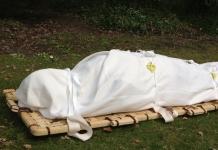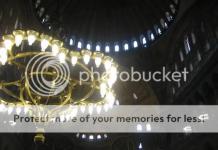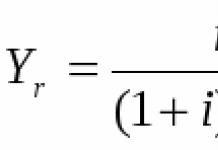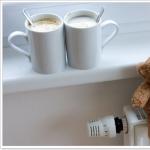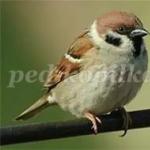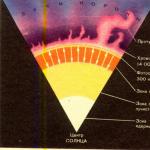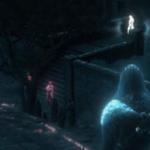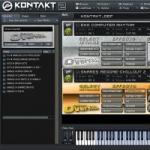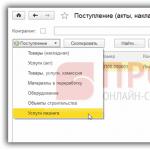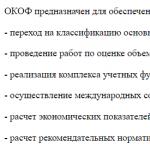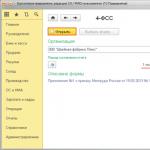Today we will talk about the beautiful German city of Heidelberg, standing among the picturesque green Odenwald massif, on the banks of the Neckar River, and is an ideal holiday destination for fans of ecotourism. Heidelberg, or if correctly read from German “Heidelberg”, is located in the warmest region of Germany, where a lot of exotic, for this country, Mediterranean vegetation grows. Moreover, the city of Heidelberg is famous for its interesting sights.
Current city of Heidelberg, which eventually united several separate villages into a whole, was founded in the period from the sixth to the eighth centuries, but in the chronicles the first mention of it dates back to 1196.

Or "Schloss Heidelberg". The story about interesting historical places in Heidelberg should begin with a mention of the ancient fortress of the Counts of the Palatinate, erected here in 1225. Heidelberg Castle is often called “the most famous romantic ruin in Germany”, because in this building three architectural styles harmoniously merged: Gothic, Renaissance and Baroque. This huge castle complex, which actually includes several castles, stands on the mountain slope of Königstuhl, which means “Royal Throne”. The buildings were built from local red sandstone. They were constantly expanded and rebuilt, but after destruction in 1693 by the troops of King Louis XIV, the ruins were never restored. But the Friedrichsbau Palace, which was not so badly damaged, was restored by 1900 and today it is one of the most frequently visited tourist attractions in the city of Heidelberg. They are especially surprised by the huge ancient wine barrel “Grosses Fass”, with a volume of two hundred and twenty thousand liters - the largest in the world. Next to this barrel there is a small statue of the court dwarf Perkeo, who used to guard the wine in it. His strange name comes from the Italian expression “Perke no?”, which means: “Why not?” They say that this is exactly how the dwarf guard answered anyone who offered him a glass or two. Tourists combine inspection of this barrel with tasting of excellent local wine: white or red. We recommend trying the famous German ice wine, the Eiswein variety. In general, the history of this German castle is so intricate that we recommend purchasing an audio guide at the entrance to the castle, also presented in Russian. Even better, take a tour and walk with a guide through the interior of the castle; visiting them is not included with a regular ticket. In July and August the castle hosts a theater festival.

Or “Ruprecht-Karls-Universität Heidelberg” - was founded in 1386, eventually becoming the most important scientific, cultural and educational center in Germany. Despite the fact that the university’s departments are scattered throughout the city, the most interesting buildings: the rector’s office, the museum, the humanities and social faculties, the punishment cell, are located in the “Old University” - “Alte Universität”, located in the very center of Heidelberg in the Altstatt district on University Square. The main university building was built in the Baroque style and amazes with luxury and splendor. By the way, tourists are happy to visit the university punishment cell, where students used to be kept for participating in duels, drunkenness, noise at night, and other offenses. All the walls of the punishment cell are covered with mysterious messages and strange drawings, which even historians have studied, but have not yet figured out their meaning. The university buildings, fortunately, were almost undamaged during the Second World War; only the library was damaged, but it was quickly restored.

Or “Alte Brücke” - a real calling card of the German city of Heidelberg. The Karl-Theodor Bridge spans the Neckar River, being a continuation of the Steingasse street and connecting it with another Landstraße street, running along the river bank and at the foot of the Holy Mountain. The bridge was built in 1788 by order of the German Elector Karl-Theodor. Today, the Old Bridge is one of the most visited attractions in Heidelberg. Over the centuries of its existence, it has been sung by writers and poets, and since 2002 it has been included in the list of endangered objects by the World Heritage Fund. The bridge is two hundred meters long and seven meters wide, it has nine arched spans in the Baroque style. The bridge portal is decorated with two imposing “Spitzhelm” towers, so named because of their resemblance to the steel helmets of medieval knights. Today, tourists can visit three damp punishment cells in the western tower, where criminals used to be kept.

Or "Stift Neuburg" - this abbey is also known as the Benedictine monastery of St. Bartholomew. It stands on the banks of the Neckar River, just opposite the “Old Town”, on the slope of Mount Köpfl. This monastery was built in 1130, and by the end of the twelfth century it was transformed into a convent for the education and upbringing of girls from noble families; unmarried ladies and widows also lived here. In 1562, the monastery was disbanded on suspicion of Lutheran heresy, and its rich book collection was included in the Palatine Library, but girls from noble families continued to study there. In the period from 1706 to 1773, the monastery belonged to the formidable Jesuit order, and in 1804 it was transferred to private ownership. In 1926, the monastery was given to the Benedictine Order by its last owner, Alexander von Bern. After the Second World War, the monastery complex was reconstructed in 1962 by master Johann Kleiss; a mechanical organ with thirty-four registers was installed here. In 2011, a reconstruction was carried out, the concept of its design was changed: in the rather ascetic interior, emphasis was placed on interesting color and optical solutions, which received a sacred meaning and symbolic meaning. Today, fifteen monks live in the monastery, who are engaged in the production of farm products and gardening. If you wish, you can stay at the monastery hotel, taking an active part in the life of this German monastery. If you want to learn more about the history of the monastery, you can purchase a tour or take an audio guide.

Or "Kurpfälzisches Museum der Stadt Heidelberg" is the place where the artistic and cultural-historical collections of the city's value are kept. The collection began with the acquisition by the museum of the “Gallery of Antiquities” by Charles Grambert. The museum is located in a house that once belonged to the rector of the University of Heidelberg, lawyer Johann Philipp Morass. The exhibition is located in the building of the former university fencing hall, as well as in the new museum building. In this Heidelberg museum you can get a lot of interesting information about the life and art of the city, about the archaeological finds made here dating back to the Celtic and Roman periods, about applied art, including a rich collection of textiles: ancient costumes, household items, old dolls . An important place is given to collections of painting, sculpture, and graphics.

– located in the “Old Town”, not far from the Market Square. This square is located on the site where a Franciscan monastery used to stand, which was abolished in 1803. The square is located at the foot of the mountain, so it offers breathtaking views of Heidelberg Castle. As for the architectural ensemble of this square, the buildings are mainly presented in the Baroque style. A remarkable example of this is the house that previously belonged to Karl Mittermeier. Here are the ancient hotels “zum Seppl”, built in 1634, and “zum roten Ochsel”, built in 1703. In addition, there is the beautiful Palais Boisserée, famous for its rich collection of ancient German paintings, which previously belonged to the collector brothers Sulpitz and Melchior Boisserée, and the Grand Duke's Palace, which today houses the Academy of Sciences. In the very center of Karlsplatz there is an interesting fountain, the sculptural composition of which illustrates “Cosmography” in a playful allegorical form. In winter, there is a Christmas market and an outdoor skating rink.

Or "Marktplatz" is the historical core of the German city of Heidelberg. It still performs its original function. The square is bordered on the east by the beautiful Town Hall building, in Baroque style, built at the beginning of the eighteenth century, and on the west by the beautiful “Church of the Holy Spirit”. The Market Square is a pedestrian zone, with a large number of cafes that are open in the summer. In the center of the square there is a beautiful baroque fountain “Hercules” - “Herkulesbrunnen”, built in the eighteenth century.

Or "Heiliggeistkirche" - located on the Market Square opposite the Town Hall building, is a Gothic basilica from the late fourteenth century, decorated with Baroque roofs and domes. This is the largest temple in old Heidelberg, built on the site of an even older temple in the late Romanesque style, dating back to 1229. By the way, archaeologists discovered the remains of its apse in 1936. The basilica was built as a ceremonial church and tomb for the Electors of the Palatinate. Of course, over the years of its existence it has been rebuilt and restored several times. The last restoration of the building took place between 1978 and 1985, during which the original colors of the basilica were restored. Here are the graves of King Ruprecht III and his wife Elisabeth of Hohenzollern. In 1936, this church was included in the “Union of Communities of the Evangelical Church of Baden”. Today, tourists attend wonderful organ music concerts, which are often held here.

Or "Kurpfälzisches Museum" - the most popular museum in the city of Heidelberg, famous for its extensive local history and art collections. The museum is located in a beautiful eighteenth-century baroque palace located on Hauptstrasse.

– located in the part of Heidelberg Castle that survived the destruction. Here in ancient years there was a real pharmacy, and now visitors have the opportunity to get acquainted with the history of the development of pharmacy from ancient times to the achievements of the twentieth century. Here you can see the reconstructed premises of an ancient pharmacy, with a production department, an alchemical laboratory, cabinets and shelves filled with antique retorts and test tubes, vials with old handwritten labels, medieval recipes, dried herbs, sets of other medicinal components, apothecary scales, old tools , with the help of which medicines were prepared in past centuries.

"Fairytale Park" Heidelberg– a great place to take your kids. The park is located on Mount Koenigstuhl and includes a carousel, a children's railway, a mini-autodrome, interesting children's attractions, and in the park pavilions your children will be able to meet their favorite characters from world-famous fairy tales. Among the scenery, which is a mysterious forest, enchanted castles, poor people's huts, Dwarf Nose, Rumplestiltskin, Baron Munchausen, the evil queen, Snow White and many others live their fairy-tale lives. The park is open daily from ten in the morning to six in the evening, and in July and August until seven in the evening.
If you want to save money when visiting the city of Heidelberg, we recommend purchasing a two-day HeidelbergCARD, the price of which is thirteen euros for one person or twenty-eight euros for the whole family. With this card you can visit many of Heidelberg's city attractions for free or at a reduced rate, freely use any public transport, including the Bergbahn funicular that takes visitors to Heidelberg Castle, receive a discount on bus tours, as well as a free guidebook. You can buy such a card at the tourist information office located at the main city station of Heidelberg, in the Town Hall building, and some hotels in the city.
Date and almond trees can not be found in all cities in Germany. Heidelberg is located in one of the warmest regions of the country. That is why medal, date, and olive trees grow here. Among the cities of Baden-Württemberg, one of the sixteen federal states of Germany, Heidelberg ranks fifth. About 150 thousand people live in it. The sights of Heidelberg are described in the article.
Base
In historiography there is such a term as “Heidelberg Man”. It is used when talking about people who lived on the territory of modern Europe several hundred thousand years ago. Their remains were discovered at the beginning of the 20th century near the city in question, near the village of Mauer (a commune in Germany).
Heidelberg as a city was first mentioned in documents that date back to 1196, namely in the records of one of the monks of Schönau. True, most of the city's districts were uninhabited in those distant times.
Heidelberg was first mentioned as a fortress in Germany in 1225. 150 years later a university was founded here. In the Middle Ages, Heidelberg in Germany served as the residence of the counts of the Palatinate.

XVII-XVIII centuries
In modern times, several important battles took place on the territory of Heidelberg. During the Thirty Years' War, Imperial Field Marshal Count Tilly captured the city. He took possession of the Palatine Library, one of the landmarks of Heidelberg.
Germany in the 17th century was not a strong state with a unified culture. Residents of different lands had difficulty understanding each other. The situation in the country worsened due to constant military conflicts. During one of these, the War of the Grand Alliance, Heidelberg was conquered by the French.

What to see in Germany? In Heidelberg, like in many German cities, despite the destruction of World War II, many interesting historical buildings have been preserved. One of them is an ancient castle, which was partially blown up by the French back in 1693. This historical monument is described in more detail below.
In the 18th century, the residence of the electors was moved to Mannheim. Heidelberg lost its political significance. Interest in this city was revived only in the 19th century.
In the economics of Germany, Heidelberg, whose photo is presented in this article, occupies not the last place. Several large enterprises are located here. This city is home to the University of Heidelberg, whose history begins at the end of the 14th century.
How to get to Heidelberg
There are several air transport hubs in Germany. The closest cities to Heidelberg are Stuttgart and Frankfurt. People usually travel from Moscow by plane through these cities. From there there are buses to Heidelberg. You can also get there from Stuttgart or Frankfurt by taxi. The distance from Stuttgart to Heidelberg is 120 km. You can also get from one city to another by train. The journey will take approximately one and a half hours.
The distance from Frankfurt to Heidelberg is 97 km. You can also get there from the airport by train. Travel time is a little less than an hour. The stations are located in the airport building itself. There are no direct routes to Heidelberg. You need to take a train from Fernbahnhof station to Mannheim and change trains there. They depart at hourly intervals (less often at night).
Buses run to Heidelberg from Frankfurt Central Station. The first one leaves at five o'clock in the morning. Travel time is 1.5 hours. You can also get there by taxi. Such a trip will cost approximately 160 euros (11.5 thousand rubles).
Education and medicine
Clinics in Heidelberg (Germany) are known throughout Europe. The Cancer Research Center, one of the world's largest molecular biology laboratories, is located here. Heidelberg University Hospital specializes in the treatment of cancer, classical and adjuvant chemotherapy, stem cell transplantation, and psycho-oncology.
There are several educational institutions in the city. The most famous is the University of Heidelberg. In 1969, the Heidelberg Hochschule was founded. Other educational institutions of the city are the Pedagogical Institute, the Institute of Church Music, and the Institute of Jewish Culture and Religion.
Attractions
The cultural life of Heidelberg is determined by the presence of large universities. There are many entertainment centers and night clubs. In short, the city's infrastructure is aimed primarily at students. One of the city's most famous cultural centers is located in the Heidelberg-Altstadt train station. But of course, there is something to see here for lovers of art and antiquity.
This German city has eleven theaters and more than twenty museums. Among the architectural monuments, we should first of all mention the aforementioned castle, which has long become the main symbol of the city, as well as the Old Bridge, the Church of the Holy Spirit.

Other attractions of Heidelberg: University Library, Hotel "At the Knight's", Neuburg Abbey, Mount Heiligenberg, Observatory on Mount Königstuhl, Church of Providence, Electoral Palatinate and Ethnographic Museums, House Museum In the vicinity of the city, music festivals and fairs are held annually.
Heidelberg Castle
The building was first mentioned in documents from 1225. In the 14th century, on the site of Heidelberg Castle there were two small fortresses - an upper and a lower one. At the end of the 17th century, the castle was attacked several times by the troops of King Louis XIV. In 1693 the French turned it into ruins.
For almost a hundred years the castle was in a dilapidated state, although several attempts were made to restore it. They wanted to demolish the building and use the building material to build a palace in the Neckar Valley. In the 18th century, Heidelberg Castle lost its significance.
For a long time, authorities saw this building as “an old ruin of many fallen and tasteless ornaments.” Count Charles de Gremberg became an opponent of this point of view. He came to Heidelberg at the beginning of the 19th century and spent more than 50 years here, devoting almost his entire life to looking after the ruined castle. It was the count who published the first guide to this historical building, which ultimately attracted the attention of tourists.
The issue of restoration of the castle was discussed for a long time. In 1890, a restoration project was prepared. But the castle was not restored - this turned out to be impossible. However, it was possible to strengthen its remaining parts. The reconstruction was carried out at the beginning of the 20th century and cost 520 marks.
At different times, such celebrities as Frederick V, Martin Luther, Victor Hugo, and Mark Twain visited Heidelberg Castle. In 1840 the railway was built. Since then, Heidelberg Castle has become one of the famous landmarks in Germany. There are tourists here not only from Europe, but also from Japan and the USA. The main attraction of the castle is the terrace, which offers a beautiful view of the city and part of the Upper Rhine Lowland.

Church of the Holy Spirit
This is the largest and most significant temple in the city. The Church of the Holy Spirit is located in the historical district of Heidelberg, in the middle of the Market Square, near the castle. The building is designed in the Gothic style. Moreover, the roofs were restored in the 17th century, and therefore represent an example of Baroque architecture.

The church was built from hewn sandstone, a material quarried on the banks of the Neckar River. For some time the building was a chapel and belonged to the Peterskirche. However, from the day of its foundation it was associated with the university and its door was used as the university notice board. This temple was first mentioned in documents in 1299.

Neuburg Abbey
The exact date of foundation of this Catholic monastery is unknown. It was built around the beginning of the 12th century. In 1144, Pope Lucius II took Neuburg Abbey under his patronage. At the end of the 12th century, the monastery changed from male to female.
Under the influence of the Reformation, the abbey joined the Cistercians. For a long time the building was in a deplorable condition. By the end of the 15th century, the number of nuns did not exceed twenty. The situation changed for the better in the 18th century. The building has been renovated. A shelter for the poor appeared here.
Neuburg acquired its modern appearance in the seventies of the 18th century. Today the monastery is active, and since 1926 it has been for men again. True, there are not many monks here. According to 2013 data, only fourteen. On the territory of the abbey there are cattle breeding and fishing farms, and a brewery.
Heidelberg Observatory
The first observatory in Baden-Württemberg was opened in 1774. It was located in Mannheim. In 1880 it was moved to Karlsruhe, and then to Heidelberg, to Königstuhl.
The grand opening of the new observatory took place in June 1898. Today it includes two departments - astrometric and astrophysical. The main activity of this institution is the search for asteroids and the study of nebulae.

Film Festival Mannheim - Heidelberg
As already mentioned, various world-scale events are held in the vicinity of the city. The Mannheim-Heidelberg Film Festival is the second most important film festival in Germany. The first belongs to Berlinsky.
The festival has been held since 1952. The competition involves directors who are committed to auteur cinema. This festival once hosted the premieres of films by Francois Truffaut, Atom Egoyan, Jim Jarmusch, and Thomas Vinterberg.

Festival at Heidelberg Castle
The event is held, despite the name, not within the walls of the city’s main attraction, but in the open air. This is the most important theater festival in Baden-Württemberg. Held on the grounds of the castle every summer.
The history of the action begins in 1926. At the opening, the premiere of a performance based on Shakespeare's play took place. The production was a success with the audience. The following year, Gerhard Hauptmann and Thomas Mann were present at the ceremony as guests of honor. Today the Heidelberg Castle Festival is one of the most important events in the German theater world.
Germany's oldest and most famous university town retains the charm of its Baroque narrow streets and picturesque tiled-roofed houses. It is famous for its abundance of theaters and museums, excellent pubs and the majestic ruins of a castle on the slope of Mount Königstuhl, which is visited by more than 3 million people every year.
It's worth going to Heidelberg for the romantic atmosphere that Goethe and Twain praised. The medieval expanses of the city create an amazing canvas of landscapes along the green valley of the Necker River, and only the bustling student life brings travelers back to our time. There are a lot of students here, which is why the local pubs are always noisy and cheerful, and young minds everywhere relax or study science on the green lawns.
Its location in the warmest region of the country gives the city a Mediterranean climate. He decorated these lands with lemon, date and almond trees, pomegranates, cypresses and palm trees. Even necklace parrots, rare for Eastern Europe, have chosen it as their home. Heidelberg is woven from these colorful contrasts, where ancient buildings intertwine into a medieval pattern of streets with wine cellars, and modern scientific centers coexist with centuries-old churches.
Flights to Heidelberg
Departure city
Enter your departure city
Arrival city
Enter your city of arrival
There
!
Back
!
Adults
1
Children
Up to 2 years
0
Up to 12 years
0
Find a ticket
Calendar of low prices for air tickets
How to get to Heidelberg
By plane
The nearest international airport is Frankfurt, from where Lufthansa buses depart daily. The bus stop is located next to the Ciao Italia restaurant (Terminal 1, exit B3). A one-way ticket costs €25 for an adult and €12.50 for a child over 14 years old. A round trip will cost 46 € and 23 €, respectively.
By train
Heidelberg's main train station (Hauptbahnhof) is located in the western part of the city and is easily reached by buses 32 and 33 from the Market Square (Marktplatz). From Frankfurt or Stuttgart you can travel to Heidelberg by high-speed trains ICE (Inter City Express). Both cities' airports have train stations inside the terminals. The cost of a one-way ticket from Stuttgart will be 27 €, from Frankfurt - 22 €. Direct train lines also connect Heidelberg with Karlsruhe and Mannheim, and intercity trains connect with Munich, Vienna, Hamburg and Cologne.
By car
The A5 federal highway and the A656 highway connect Heidelberg to Mannheim and allow easy access to the city from any direction. Frankfurt Airport is approximately 60 km from Heidelberg. Travel time will take about an hour.
Hotels in Heidelberg
City
Enter the name of the city
arrival date
!
date of departure
!
Adults
1
Children
0
up to 17 years oldFind a hotel
There are not many five-star hotels in the city, but finding budget accommodation is much more difficult. The most luxurious options include the Der Europaische Hof Hotel Europa, located within walking distance of the Old Town. The hotel has a restaurant, Kurfürstenstube, which offers one of the best and most delicious menus in the city. The price per room starts from 200 - 250 €. In the same price category is the Heidelberg Suites boutique hotel next to the famous Old Bridge. It is designed in the style of German romanticism and offers luxury apartments with views of Heidelberg Castle.
The 4-star Crowne Plaza Heidelberg is just a few minutes' walk from the pedestrian area of the Old Town. The rooms are quiet and feature a large work area, including a fax machine, ideal for business travelers. The price for a single room also starts from 200 €.
The design Qube Hotel Heidelberg offers 45 rooms with plenty of natural light. The hotel features a rooftop terrace that also houses the upscale Qube restaurant. In it, the price for a standard room starts from 100 €.
Shopping in Heidelberg
Heidelberg's main shopping district stretches along the Necker River and includes the streets and alleys between Bismarck Square and the Market Square. The first place in it is occupied by Hauptstrasse, where all the famous brands and shops selling glass, crystal, handicrafts, and other items are collected. Käthe Wohlfahrt is one of the most popular gift shops at Hauptstraße 124. It sells Christmas toys and decorations all year round.
Classic souvenirs in the form of magnets and postcards abound in the Market Square around the Church of the Holy Spirit, which is quite a contrast. Heidelberg is also famous for its farmers' markets in the morning. You can find them on the Market Square on Wednesdays and Saturdays, and on Tuesdays and Wednesdays on Friedrich Ebert Square. Once a month on Saturdays, the city hosts a flea market along Kirchheimer Weg. The exact dates of the event can be found on the city’s official website. At this market you can see a whole range of trinkets from different eras, and real antiques can be found in the Spiess & Walther store at Friedrich-Ebert-Anlage 23a.
The Leder-Meid store at Hauptstrasse 88 sells very high-quality genuine leather goods, mostly bags, jackets and various accessories. For branded clothing, you should go to Caroline VK, where such famous brands as Hugo, Boss, Etro, Armani are represented. More popular brands under one roof can be found in the Kaufhof shopping galleries; there are two of them in Heidelberg and they are located within walking distance of each other. There are clothes, shoes, and household goods here.
The most original souvenir from Heidelberg can not only be bought, but also tasted at the famous confectionery shops Knösel and Heidelberger Studentenkuß. It consists of sweets with the image of a kissing couple, which is called the “Student Kiss”. The owner of the Knösel cafe came up with this sweet treat so that students and boarding students could use it to show their sympathy without violating the strict boundaries of decency. The game of half-hints turned out to be so intriguing and romantic that the “Student Kiss” turned into another symbol of Heidelberg.
Festival of Lights in the Old Castle
Three times a year, the ruins of Heidelberg Castle glow with bright red flames against the evening sky. Sparks and rising smoke make this spectacle incredibly realistic and exciting. All this is part of the most colorful event in the city - the Festival of Lights.
The Old City Hall building, located in the historical part of Heidelberg on the Market Square, is one of the main architectural decorations of the city. It was built at the beginning of the 18th century on the site of an older building that was destroyed during the War of the Palatinate Succession.
The war of 1688-1697 caused serious damage to Heidelberg, like many other cities. The destruction was so severe that for ten years after its completion the city lay in ruins, and only in 1701 a new town hall building was built, which blended very organically into the ensemble of the square. The building is made in the Baroque style and attracts architecture lovers with its picturesque forms.
Heidelberg University
The famous University of Heidelberg is one of the oldest universities in Europe. Located in the historical part of the city, on University Square, the old university building is one of the main architectural attractions of the city. The "Old University" is a three-story building in the Baroque style, erected in 1712-1728 by order of Elector Johann Wilhelm.
The history of Germany's most prestigious university dates back to 1386. This happened after in 1385, Elector Ruprecht I received permission from Pope Urban VI to create a university. The Faculty of Theology was the first to open, and soon the Faculty of Philosophy and Law were added. Almost immediately after the creation of the university, the first students composed the text of the famous student anthem "Gaudeamus".
Over the long history of the University of Hedelberg, its graduates included famous scientists and thinkers - philosophers Hegel and Jaspers, naturalist Robert Bunsen, German Chancellor Helmut Koll, as well as many of our famous compatriots. Eight Nobel laureates came from the University of Heidelberg, as well as many outstanding personalities who make up the “golden fund” of humanity.
What sights of Heidelberg did you like? Next to the photo there are icons, by clicking on which you can rate a particular place.
Old Bridge
One of Heidelberg's main attractions is the beautiful Old Bridge, also known as the Karl Theodor Bridge. It is a huge arched structure laid across the Necarr River and located right in the historical district of the city.
The old bridge in its current form was constructed in 1788 under the Great Elector Karl Theodor. It became the ninth bridge built on this site. Its style shows early Baroque features and is a continuation of the ancient stone alley leading from the old part of the city to the Mount of Saints. The total length of the structure is 200 meters, and the average width is 7 m.
Currently, the high value of the bridge is due not only to its beautiful appearance, but also to its location in the wonderful Neckarr Valley, from where a magnificent panorama of Heidelberg Castle opens, attracting tourists from all over the world. After visiting the Old Bridge, you will get a lot of positive emotions and take great photographs.
Heidelberg Castle is one of the main architectural attractions of Germany. Situated in the Neckar river valley, it is one of the oldest castles in the country and attracts thousands of tourists with its ruins and magnificent architecture. There is more than one style in the decor of the castle - there is Baroque, Gothic, and Renaissance, the contrast between which literally amazes the imagination of visitors.
The history of Heidelberg Castle dates back to the end of the 12th and beginning of the 13th century; the first mentions of the castle date back to this time. For many centuries the castle was used as the residence of the elector, and was besieged and ravaged by invaders more than once. The castle suffered the most severe destruction in the 17th century, when from 1633 to 1635 it was besieged by French and Swedish troops, and 60 years later the troops of Louis XIV almost completely destroyed the castle.
Since the 18th century, several attempts have been made to restore the castle in Heidelberg, but each time, due to financial difficulties, the reconstruction was postponed, until in 1890 it was decided to leave most of the castle in ruins and restore only Friedrichsbau Palace. But despite this, Heidelberg Castle still amazes with its splendor and grandeur, being the pride of Germany, a witness to many pages of its history.
St. Peter's Church
St. Peter's Church is the oldest church in Heidelberg. Today it is a Lutheran church, but in its early years it belonged to a Catholic parish. The construction of the Peterskirche dates back to the turn of the 12th-13th centuries; a more precise date is not indicated in the historical documents that have survived to this day.
Despite its antiquity, the Peterskirche is not always included in tourist routes - its main competitor is the Church of the Holy Spirit located on the main square. But true connoisseurs of ancient architecture know that St. Peter's Church is at least two hundred years older.
For many centuries, St. Peter's Church served as the "court" church of the University of Heidelberg. Under its arches lie the ashes of many prominent scientists who taught at the university. Sometimes various educational events and public lectures are held here.
Bismarck Tower
In different parts of the world you can find monuments that perpetuate the memory of the famous “Iron Chancellor” Otto von Bismarck, which bear his name. From 1869 to 1934, active construction of such monuments was carried out; about 250 of them were built, and about 170 have survived to this day. Architecturally, the Bismarck towers looked different; as a rule, they were built in different styles. Heidelberg was no exception - Bismarck's column appeared here too.
The Bismarck Observation Tower was built in 1903 on the southern slope of the Mount of the Holy Spirit, not far from the famous Philosophers' Path. This is a monumental building, square in plan, made of stone blocks. At the top of the tower, accessible by a spiral staircase, there is a cast-iron bowl for lighting a fire. Stylistically, the building is made in the spirit of neoclassicism, and its creator was one of the most famous architects of Germany of the twentieth century - Wilhelm Kreis.
Are you interested in knowing how well you know the sights of Heidelberg? .
Neuburg Abbey
Neuburg Abbey, located at the foot of the Holy Mountain, dates its history back to 1130. It was founded by the monks of Lorsch Abbey, one of the largest Benedictine centers at that time. A little less than two centuries later, the small monastery was transformed into a monastery, and from that moment on, active construction began on its territory.
Over the long years of the monastery's existence, many outstanding thinkers, writers and scientists visited its walls. The monastery experienced difficult times in the 16th century during the Reformation, when the monastery was closed and restored only at the beginning of the 18th century. The restoration of the monastery was carried out by the Jesuit order, which owned the Neuburg monastery almost until the end of the 1790s. At the beginning of the twentieth century, the monastery again passed to representatives of the Benedictine Order, and remains so to this day.
The most popular attractions in Heidelberg with descriptions and photographs for every taste. Choose the best places to visit famous places in Heidelberg on our website.
More attractions of Heidelberg

How to get to Heidelberg
Heidelberg (Heidelberg) is the fifth largest city in Baden-Württemberg, located on the banks of the Neckar River and surrounded by several hills. Geographically located in the north of the region, in the Neckar river valley. Heidelberg is both a major tourist center with many preserved historical attractions (the city was not affected by bombing during the Second World War), and a “university” city, since several large higher education institutions are concentrated here, including the ancient University of Heidelberg.
To get to Heidelberg from Moscow (or other cities), you first need to fly to one of the closest air hubs in the region - Stuttgart or Frankfurt, and then take a train, bus or taxi directly to Heidelberg. Recently, flights to Karlsruhe were also launched, operated by a Russian low-cost airline.
How to get from Stuttgart to Heidelberg
The distance between Stuttgart and Heidelberg is approximately 120 km. Heidelberg is located north of Stuttgart. By train you can get from one city to another in 40 minutes to an hour and a half, depending on the type of train, by taxi in approximately 2 hours.
By train or bus
Direct trains between Stuttgart and Heidelberg run every half hour, starting at 7.30 am (there are also night trains, but they run less frequently). The cheapest way to get there is to take the RE (regional) train. In this case, the travel time will take about one and a half hours (there will be stops along the way). The fastest, but also the most expensive way is to use the high-speed train type IC (transregional), then the travel time will be only about 40 minutes.
To get to Heidelberg from Stuttgart by train, you need to take the train lines S2 and S3 from Stuttgart airport and get to Stuttgart Central Station (trains run from 5 am to midnight, travel time is about 30 minutes), from there transfer to a direct train to Heidelberg. Train schedules can be checked at the railway service . Tickets to Heidelberg can be purchased in advance on the website or at the ticket office of Stuttgart railway station.
Buses from the airport and Stuttgart central station to Heidelberg start at 5.45 am. Transportation is carried out by companies , Postbus, Deinbus and others. Travel time is from 2 to 2.5 hours. Buses leave once an hour. The last bus leaves at 23.45 at night.
By taxi
A taxi is a more expensive way to get from city to city than a train, but this method may be relevant in case of a night flight (trains run less often at night), or in case of a large amount of luggage. You can order a taxi at the information desk at Stuttgart airport or in advance at the transfer service
Kismihok/Heidelberg
How to get from Frankfurt to Heidelberg
Heidelberg is located 90 km south of Frankfurt am Main. You can get from Frankfurt Airport to Heidelberg by train or taxi. By rail the travel time will take a little less than an hour, by highway - also a little less than an hour, depending on traffic congestion.
By train or bus
Arriving at Frankfurt Airport, tourists can immediately transfer to railway transport, since there are 2 stations at the airport itself - from one (Regionalbahnhof) trains go to the city to the main railway station of Frankfurt, from the other (Fernbahnhof) trains go to different cities in Germany. Thus, from Fernbahnhof station you can immediately transfer to the train to Heidelberg, which departs once an hour starting at 8 am (trains run less frequently at night).
The only inconvenience of this method is the need to make a transfer in Mannheim, since there are no direct trains from Frankfurt Airport to Heidelberg, but the transfer itself, as a rule, does not take much time (about 10-20 minutes), so it does not greatly affect the overall duration of the trip. You can see the schedule at the railway service .
There is another way to get to Heidelberg - this is to take the train to the main train station at Frankfurt airport from the Regionalbahnhof station, and from there transfer to a direct train to Heidelberg, which runs once an hour, starting at 6 am (less often at night). The travel time will be just over an hour, no transfers are required. Tickets for Heidelberg can be purchased in advance online or at the ticket office of Frankfurt train station.
You can take the bus to Heidelberg at the airport or at Frankfurt central station. The first bus starts running at 04.45 am, the last one leaves the airport at 0.25 am. Flights are operated by various companies, incl. , Postbus, BerlinienBus and others. Travel time is from 1.5 hours to 1 hour 50 minutes.
By taxi
Taxi is a more expensive way to get from Frankfurt to Heidelberg. However, this method can be useful in case of a night flight to Frankfurt, since trains do not run regularly at night and getting to Heidelberg can be problematic. It will also be more convenient to take a taxi if you have a large amount of luggage. You can order a taxi directly at the airport at the information desk in the arrival terminal, or in advance via the Internet on the transfer order website . The travel time will be about 50 minutes.
 Tobias von der Haar/Heidelberg
Tobias von der Haar/Heidelberg Where to stay in Heidelberg
Heidelberg's hotel stock boasts all star categories, but the most common are 3 or 4 star hotels, as well as B&Bs without stars, which are great for a one-night stay in the city.
Leonardo Hotel Heidelberg City Center, 4 stars
The Leonardo Hotel Heidelberg City Center is located in the Bergheim district, within walking distance of the historical part of the city. The hotel has its own parking, restaurant and free Wi-Fi throughout the entire territory. Outside the hotel there is an outdoor terrace for relaxation. Comfort or superior rooms have air conditioning, safe, hairdryer, telephone, TV, satellite TV, work desk, coffee/tea set. Breakfast may be included in the room rate, or may be paid additionally depending on the room type. The hotel received the highest ratings from guests for its location and professionalism of the staff.
The hotel's reception desk is open 24 hours a day. Standard check-in is from 15.00, check-out is until 12.00. You can find out more about availability and hotel costs for specific dates on the booking website Booking.com.
Hotel Goldene Rose, 3 stars
Goldene Rose Hotel is located in the Old Town area, within walking distance of the city's main attractions. Among the areas to stay in Heidelberg, Altstadt is considered the most convenient for exploring the city. There is also a public transport stop nearby. Parking, free Wi-Fi, summer terrace - all this is offered to hotel guests. All hotel rooms are divided into standard and “comfort” types. The rooms have everything you need, including a work desk, ironing facilities, TV, radio, telephone, hairdryer. Buffet breakfast is included in the room rate. The hotel received the best reviews for its location, cleanliness of the rooms and professionalism of the staff.
Check-in at the hotel is from 14.00, check-out is until 12.00. You can find out more about availability and hotel costs for specific dates on the booking website Booking.com.
Hotel Bayrischer Hof, 3 stars
The Hotel Bayrischer Hof is located in the city center, equidistant from both the train station and historical attractions. There is a public transport stop next to the hotel. The area in which the hotel is located is also great for shopping. The hotel has its own parking, free Wi-Fi throughout, and luggage storage. The hotel has rooms of different categories: standard, superior, twin, junior suite. The standard room has a bathroom with hairdryer, telephone, cable TV, minibar. Breakfast in all types of rooms is paid separately.
The best reviews for the hotel are given for the location, cleanliness of the rooms and professionalism of the staff. Check-in is from 16.00, check-out is until 10.30. You can find out more about availability and hotel costs for specific dates on the booking website Booking.com.
Hotel Heidelberger Hof, 3 stars
The hotel is located in the university district of Heidelberg. The hotel has private parking, a sauna, a fitness room, and you can also rent bicycles. Free Wi-Fi is available throughout the hotel. The hotel offers standard, comfort and junior suite rooms. The rooms have a TV, safe, work desk, hairdryer, telephone, fan. Some room types include breakfast. The hotel receives the best ratings for its location and staff professionalism.
Check-in is from 14.00, check-out is until 11.00. You can find out more about availability and hotel costs for specific dates on the booking website Booking.com.
 dmytrok/Heidelberg
dmytrok/Heidelberg Sights of Heidelberg
The sights of Heidelberg are extremely diverse: these are historical monuments (the central of which is Heidelberg Castle), cultural (many interesting museums, such as the Palatine Museum or the Museum of Antiquity, the German Packaging Museum or the Max Burke Textile Museum), natural (mountains and forests in the area , which have observation decks and walking trails), as well as many park and garden areas.
Heidelberg Castle
Heidelberg Castle is included in the list of the 100 most beautiful places in Germany, and this is no coincidence. The huge architectural complex in the style of German romanticism was built 5 centuries ago and served as a home for royalty. Today, the castle, located at the highest point of the city, rises on the ancient quarters and makes an indelible impression on guests and residents of Heidelberg, and the views of the castle are equally attractive both in the daytime and in the evening, when the sun begins to set below the horizon, and at night, when the castle is illuminated by multiple illumination
The castle is open to visitors from 8 am to 6 pm daily, the main inspection is exterior, because The interiors of the castle have not survived. Entrance to the castle costs from 6 euros, audio guides – 5 euros (available in Russian).
Old Bridge
The bridge over the Neckar river was built in the 18th century from sandstone. There are only a few bridges of this type in Europe. On the side of the old city, the bridge is decorated with medieval gates, which are also an independent landmark of the city. In addition, the old bridge is decorated with several sculptural groups, in the center of one there is a statue of Prince Charles Theodore (the initiator of the creation of the bridge), in the center of another there is a sculpture of the Roman goddess Minerva. The Old Bridge is entirely pedestrian and is part of the longest pedestrian street in Europe. It is through the bridge that you can get to the old part of the city and further to Heidelberg Castle.
 Abhijeet Rane/Heidelberg Castle and Old Bridge
Abhijeet Rane/Heidelberg Castle and Old Bridge Historical Buildings
Heidelberg is administratively divided into several districts, one of which is Altstadt (literally “old town”). It is here that the largest number of surviving historical monuments is concentrated. In particular, such historical buildings include the building of the old university (founded in 1386), made in the Baroque style, in which more than 30 thousand students from different parts of the world study in 12 different faculties; entrance to the university is free and accessible to tourists.
Karlstor, or Charles's Gate, is another well-preserved landmark located in the eastern part of the city. The construction of the gate dates back to 1775, the architectural style is neoclassical, with elements of Romanesque architecture, the gate is decorated with 4 lions, symbolizing the power and might of the former kings.
The city hall, built in the early 18th century, is a mix of styles. Traditional elements here are mixed with elaborate Rococo details, but this does not create the impression of disunity; rather, on the contrary, it demonstrates continuity in art. This mixture of styles is typical for many buildings in Europe and is associated with the need for alterations and reconstruction. Heidelberg City Hall was last renovated at the beginning of the 20th century.
In the old quarter, some residential buildings are also of interest, for example, the residential building Zum Ritter (“at the knight’s”) dates back to 1592 and is considered the oldest residential building surviving in the city; Also of interest are the Kornmarkt square with the statue of the Virgin Mary, St. Peter's Church, the university library, the Hexenturm tower and others.
 dmytrok/Heidelberg
dmytrok/Heidelberg City squares, Botanical garden, zoo
The city has preserved several beautiful ancient squares that are perfect for tourist walks surrounded by historical buildings - this is Bismarckplatz, Karlsplatz, Marktplatz, and University Square. In addition to cityscapes, the city is ready to offer several landscaped park areas. These, in particular, include the Botanical Gardens (on the territory of the University of Heidelberg). The Heidelberg Gardens are considered the oldest botanical gardens in Germany (founded in 1593). Here are unique collections of plants and flowers that grow in various eco-systems, for example, in the upper reaches of swamps, alpine meadows, wooded dunes or vineyards.
The Heidelberg Zoo was built relatively recently, but has already gained fame thanks to the collection of animals living on the territory of the zoo. These include lions, tigers, brown bears, pandas, and giant turtles. Also on the territory of the zoo there is an area for feeding fur seals, and there is also a separate area where elephants live. The zoo is organized in such a way that there is a lot of entertainment for children, and there are also places for picnics in the fresh air. The zoo is open daily from 9 am to 7 pm, entry costs 10 euros for adults and 5 euros for children. The Heidelberg Zoo is modeled after the zoos in Stuttgart and Munich, but on a smaller scale.

What to see in the area
Heidelberg is famous not only for its attractions within the city, but also for its landscapes in the surrounding area. There are many walking routes around the city that allow you to see the city from above from specially organized observation platforms. For those who do not want to climb the mountain on foot, there is a funicular. In addition to the natural beauty, the area around Heidelberg also boasts several picturesque small towns that are renowned for their attractions and atmosphere. These, in particular, include Kirchheim, Ziegelhausen, Rohrbach, and the palace and park complex in Schwetzingen deserves special attention.
Observation platforms and funicular ride
There are several natural viewing platforms around Heidelberg, due to the fact that Heidelberg is located in a valley. The most famous places for exploring the city from top to bottom are the Heiligenberg mountain, the Königstuhl mountain and the Molkenkur mountain.
Heiligenberg is located on the northern side of the city, its height is approximately 440 meters. At the top of the mountain are the ruins of St. Stephen's Abbey, which is another reason to climb Heiligenberg. In addition, on the neighboring peak you can also find the ruins of another abbey - the Abbey of St. Michel. From both points there are picturesque views of the Neckar River valley.
The Königstuhl has a height of 568 meters, from here there are views not only of Heidelberg, but also of the entire Neckar valley and even partly of the Rhine valley. In addition to the observation deck, you can also find a family theme park and an observatory here.
Mount Molkenkur, which is located just below Königstuhl, also offers spectacular views of Heidelberg and the valley. In addition, you can not only visit here during an excursion walk, but also stay longer, since it is located here hotel with terrace view and a restaurant surrounded by a picturesque forest.
The Heidelberg funicular travels along its route to all the most interesting places in the city. Starting at Kornmarkt Square, the carriages pass the Heidelberg Castle station and then climb Mount Molkenkur. Then, if you wish, you can stay here, or you can climb even higher - to Mount Königstuhl, but on another funicular. The fare for the lower funicular is 7 euros, the cost for the entire route, including Mount Königstuhl, is 12 euros. In summer, the funicular operates from 9 am to 8 pm (cars depart every 20 minutes). In winter, the funicular operates until 5 pm. Cable cars and funiculars are common in the Black Forest and are the most convenient way to explore the local mountains.
 Sebastian Müller/Heidelberg
Sebastian Müller/Heidelberg Philosophers' Path
Since the city is considered a "university city", it is not surprising that the walking trail around Heidelberg was also named poetically, and the name itself is associated with education. The Philosophers' Trail runs through the outskirts of Heidelberg, offering the best views of the city and the Neckar valley. Many sites along the route were named after various philosophers - Eichendorff, Merian, Holderlin.
In addition, along the route you can also visit the “gardens of philosophers” - this is the name given to the botanical gardens located on the hills of the valley. Since the climate of Heidelberg is close in its properties to Italian Tuscany, many heat-loving plants have taken root here - Japanese sakura, cypress trees, lemons, bamboos, rhododendrons, gingkos and much more. The landscaped garden has collected so much interesting flora that it has become an independent tourist attraction.
8 km from Heidelberg is the small but colorful town of Schwetzingen. It is famous, first of all, for its palace and park complex, the appearance of which dates back to the 14th century. Previously, the residence of the rulers of the German lands was located here; the palace reached its heyday under the reign of Prince Karl Theodor, at which time extensive (70 hectares) park areas around the palace were designed.
Part of the park area is made in the traditional English style, while the palace garden was made in the Baroque style. There are more than 100 different sculptures in the park, in addition, there are several interesting architectural structures here - the temple of Apollo, a summer house, the design of which is reminiscent of small Italian villas, and, you will be surprised, here you can even find a small mosque with minarets, decorated with oriental ornaments and made in the late Baroque style (the mosque never served religious purposes).
You can also find a lot of interesting things inside the palace, since the original interiors have been preserved here. The Rococo Theater, which can be found in the northern wing of the palace, deserves special attention. You can move around inside the palace only with organized tours, which run daily from 11 a.m. to 4 p.m. (until 5 p.m. on weekends). The cost of the excursion is from 10 euros.
Entrance to the gardens can be self-guided (without a guided tour), entry cost starts from 6 euros. The gardens are open from 9 am to 8 pm in summer, and until 5 pm in winter. If you are interested in exploring “palace” cities, then you will find the towns of Rastatt near Karlsruhe and Ludwigsburg, located near Stuttgart, no less interesting.
 François Philipp/Schwetzingen
François Philipp/Schwetzingen

